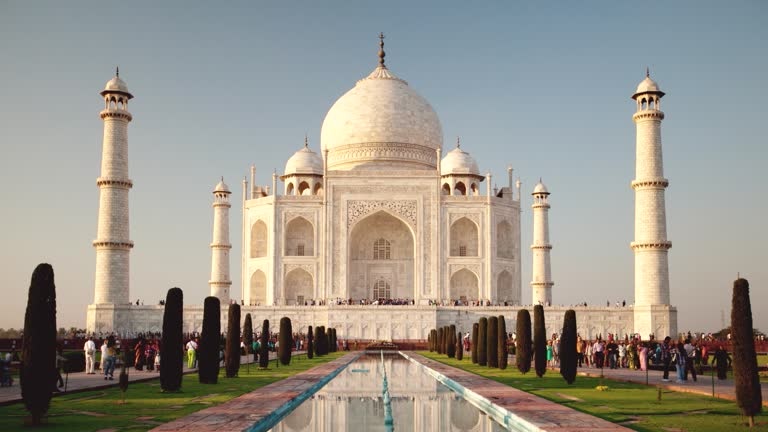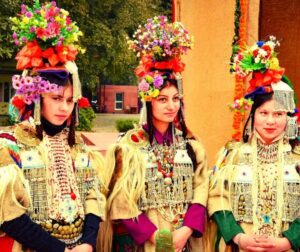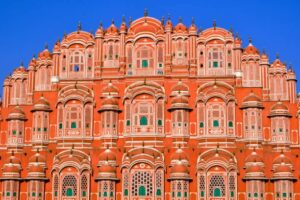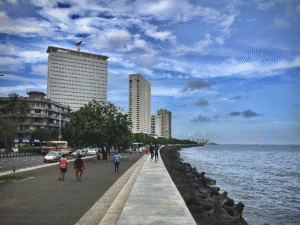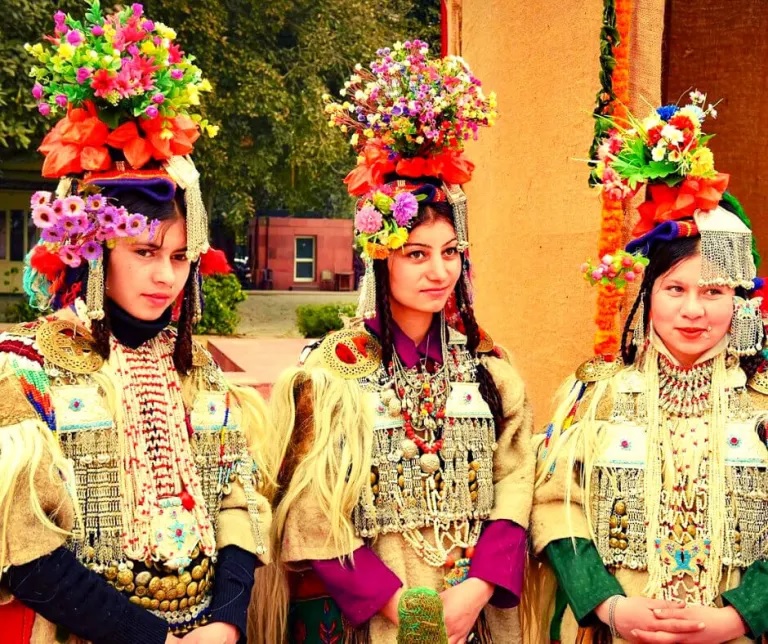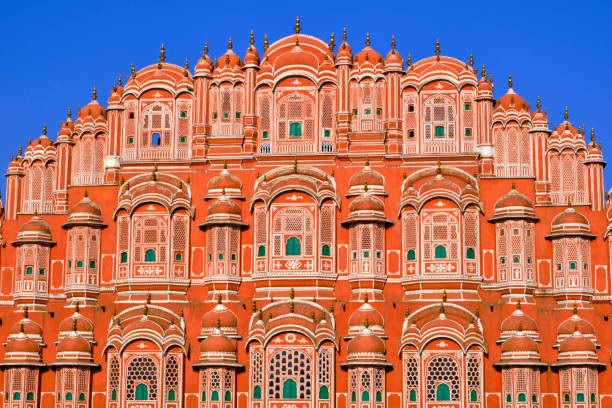Overview of North India’s Climate Zones
Before diving into seasonal recommendations, it’s important to understand North India’s varied climate. The region can be divided into:- Himalayan Belt (Jammu & Kashmir, Himachal Pradesh, Uttarakhand): Cold winters, pleasant summers, heavy snowfall in December–February.
- Plains (Delhi, Punjab, Uttar Pradesh): Hot summers, mild winters, monsoon rains.
- Desert Region (Rajasthan): Extremely hot summers, cool winters, sparse rainfall.
Best Time to Visit North India by Season
1. Winter (October to February)
Why it’s great: Winter is arguably the best time to visit North India for most tourists. The weather is cool, making it ideal for sightseeing, adventure sports, and exploring deserts or cultural landmarks. Top Destinations:- Rajasthan: Jaipur, Udaipur, Jaisalmer – enjoy desert safaris and royal architecture in cool weather.
- Agra: Comfortable time to visit the Taj Mahal without the heat.
- Varanasi: Pleasant weather for attending the Ganga Aarti and boat rides.
- Delhi: Explore monuments and markets in mild temperatures.
- Camel safaris in Jaisalmer
- Attending winter festivals (e.g., Jaipur Literature Festival)
- Snow sports in Manali, Auli, and Gulmarg
2. Summer (March to June)
Why it’s selective: Summer in the plains and deserts can be scorching, but it’s the perfect time to escape to North India’s hill stations. Top Destinations:- Manali & Shimla (Himachal Pradesh): Ideal for trekking, rafting, and cool mountain air.
- Leh-Ladakh (Jammu & Kashmir): Roads reopen by late May; stunning landscapes await.
- Nainital & Mussoorie (Uttarakhand): Popular among families and honeymooners.
- Trekking and paragliding in Bir-Billing
- River rafting in Rishikesh
- Motorbike tours to Leh and Spiti Valley
3. Monsoon (July to September)
Why it’s mixed: Monsoon brings lush greenery and romantic vibes to many regions, but it also brings travel disruptions due to landslides or floods in some areas. Top Destinations:- Valley of Flowers (Uttarakhand): Only accessible during monsoon and in full bloom.
- Mount Abu (Rajasthan): A rare hill station in an otherwise dry state, perfect for monsoon.
- Chail & Kasauli: Quieter hill stations with misty views.
- Photography and nature walks in lush surroundings
- Spiritual retreats and yoga in Rishikesh or Dharamshala
- Ayurvedic treatments in nearby wellness centers
Best Time to Visit North India by Interest
Adventure Travel
- Best Months: May to October for Ladakh, Himachal Pradesh, and Uttarakhand
- Activities: Trekking, biking, rafting, skiing
Cultural & Historical Exploration
- Best Months: October to March
- Top Spots: Delhi, Agra, Varanasi, Jaipur
Wildlife Safaris
- Best Months: November to April
- Best Places: Jim Corbett National Park, Ranthambhore, Sariska, and Dudhwa
Spiritual Journeys
- Best Months: All year, depending on location
-
- Rishikesh/Haridwar: October to April
- Varanasi: November to March
- Amritsar: October to February
Month-by-Month Snapshot of North India Travel
Month Weather Recommended Destinations January Cold & Dry Rajasthan, Agra, Varanasi February Pleasant Delhi, Jaipur, Rishikesh March Mild Amritsar, Mathura (Holi Festival) April Warm Shimla, Manali, Nainital May Hot in Plains Ladakh, Mussoorie June Very Hot Himachal, Uttarakhand Hills July Rain Begins Valley of Flowers, Chail August Heavy Rain Avoid high altitudes September Monsoon Ends Dharamshala, Jaipur October Cool & Clear Best all-round travel month November Mild & Festive Diwali in Delhi, Pushkar Fair December Cold Snowy trips in Gulmarg, Manali Final Thoughts on the Best Time to Visit North India
North India is truly a year-round destination, but your ideal time depends on what you’re looking for. For a well-rounded cultural and historical experience, October to March is ideal. For cooler escapes in the hills, head there between April and June. Monsoon has its own charm for nature lovers, though it requires flexible planning. Choosing the best time to visit North India ensures you get the most out of your journey—whether that means catching snowfall in the Himalayas, soaking in spirituality in Varanasi, or watching the sunset in the deserts of Rajasthan. -
To make the most of your journey, explore our handpicked North India travel packages designed for every season and interest.
Overview of North India’s Climate Zones
Before diving into seasonal recommendations, it’s important to understand North India’s varied climate. The region can be divided into:- Himalayan Belt (Jammu & Kashmir, Himachal Pradesh, Uttarakhand): Cold winters, pleasant summers, heavy snowfall in December–February.
- Plains (Delhi, Punjab, Uttar Pradesh): Hot summers, mild winters, monsoon rains.
- Desert Region (Rajasthan): Extremely hot summers, cool winters, sparse rainfall.
Best Time to Visit North India by Season
1. Winter (October to February)
Why it’s great: Winter is arguably the best time to visit North India for most tourists. The weather is cool, making it ideal for sightseeing, adventure sports, and exploring deserts or cultural landmarks. Top Destinations:- Rajasthan: Jaipur, Udaipur, Jaisalmer – enjoy desert safaris and royal architecture in cool weather.
- Agra: Comfortable time to visit the Taj Mahal without the heat.
- Varanasi: Pleasant weather for attending the Ganga Aarti and boat rides.
- Delhi: Explore monuments and markets in mild temperatures.
- Camel safaris in Jaisalmer
- Attending winter festivals (e.g., Jaipur Literature Festival)
- Snow sports in Manali, Auli, and Gulmarg
2. Summer (March to June)
Why it’s selective: Summer in the plains and deserts can be scorching, but it’s the perfect time to escape to North India’s hill stations. Top Destinations:- Manali & Shimla (Himachal Pradesh): Ideal for trekking, rafting, and cool mountain air.
- Leh-Ladakh (Jammu & Kashmir): Roads reopen by late May; stunning landscapes await.
- Nainital & Mussoorie (Uttarakhand): Popular among families and honeymooners.
- Trekking and paragliding in Bir-Billing
- River rafting in Rishikesh
- Motorbike tours to Leh and Spiti Valley
3. Monsoon (July to September)
Why it’s mixed: Monsoon brings lush greenery and romantic vibes to many regions, but it also brings travel disruptions due to landslides or floods in some areas. Top Destinations:- Valley of Flowers (Uttarakhand): Only accessible during monsoon and in full bloom.
- Mount Abu (Rajasthan): A rare hill station in an otherwise dry state, perfect for monsoon.
- Chail & Kasauli: Quieter hill stations with misty views.
- Photography and nature walks in lush surroundings
- Spiritual retreats and yoga in Rishikesh or Dharamshala
- Ayurvedic treatments in nearby wellness centers
Best Time to Visit North India by Interest
Adventure Travel
- Best Months: May to October for Ladakh, Himachal Pradesh, and Uttarakhand
- Activities: Trekking, biking, rafting, skiing
Cultural & Historical Exploration
- Best Months: October to March
- Top Spots: Delhi, Agra, Varanasi, Jaipur
Wildlife Safaris
- Best Months: November to April
- Best Places: Jim Corbett National Park, Ranthambhore, Sariska, and Dudhwa
Spiritual Journeys
- Best Months: All year, depending on location
-
- Rishikesh/Haridwar: October to April
- Varanasi: November to March
- Amritsar: October to February
Month-by-Month Snapshot of North India Travel
Month Weather Recommended Destinations January Cold & Dry Rajasthan, Agra, Varanasi February Pleasant Delhi, Jaipur, Rishikesh March Mild Amritsar, Mathura (Holi Festival) April Warm Shimla, Manali, Nainital May Hot in Plains Ladakh, Mussoorie June Very Hot Himachal, Uttarakhand Hills July Rain Begins Valley of Flowers, Chail August Heavy Rain Avoid high altitudes September Monsoon Ends Dharamshala, Jaipur October Cool & Clear Best all-round travel month November Mild & Festive Diwali in Delhi, Pushkar Fair December Cold Snowy trips in Gulmarg, Manali Final Thoughts on the Best Time to Visit North India
North India is truly a year-round destination, but your ideal time depends on what you’re looking for. For a well-rounded cultural and historical experience, October to March is ideal. For cooler escapes in the hills, head there between April and June. Monsoon has its own charm for nature lovers, though it requires flexible planning. Choosing the best time to visit North India ensures you get the most out of your journey—whether that means catching snowfall in the Himalayas, soaking in spirituality in Varanasi, or watching the sunset in the deserts of Rajasthan. -
To make the most of your journey, explore our handpicked North India travel packages designed for every season and interest.
Trip Form
Best Time to Visit North India: A Complete Seasonal Travel Guide

